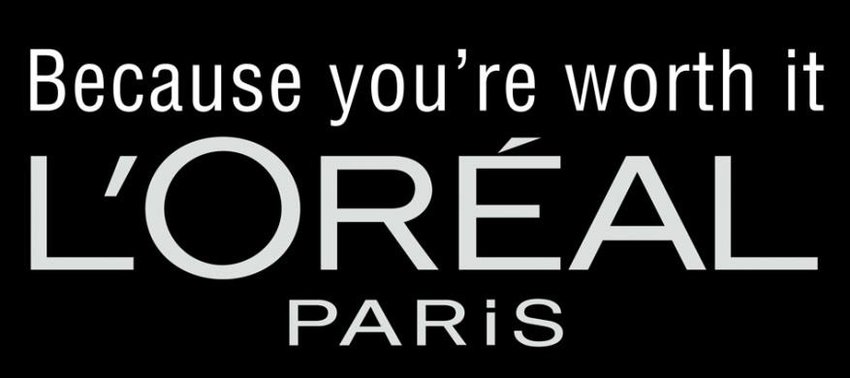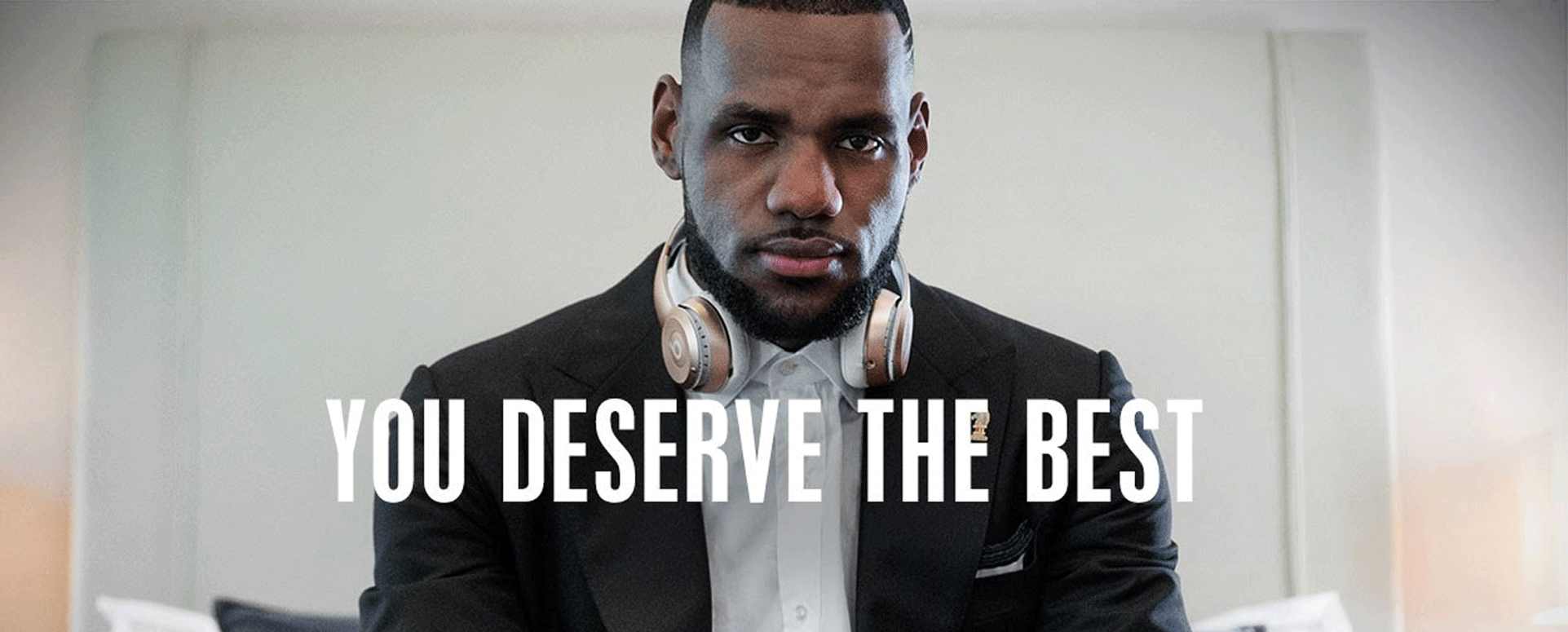Changing minds - truly changing minds, in a way that lasts - is extraordinarily difficult. When company believes that they need to persuade consumers to buy their products, they will immediately have to deal with that fact. In response, most companies don't try to achieve true persuasion, and instead opt to employ a bag of tricks for influencing behavior. On the one hand, these strategies do work. On the other hand, they have some serious downsides. Let's look at a couple of these strategies.
I'm going to call the first strategy "narcissism," or if you prefer, "sexy and I know it", from the LMFAO song by that name. This kind of marketing is about saying one simple thing, loud and clear: We are awesome. Here's an example of that kind of messaging from Stanford University:

And here's another one from T-Mobile:

There's nothing wrong with providing your customer with evidence that you have a quality product. Customer reviews and testimonials would be other examples of that kind of evidence. Nor is there anything wrong with being proud of your accomplishments - in moderation. The issue is this: It's difficult to hear your customer when you're focused on talking about yourself. For that reason, an organization that predominantly uses the "narcissistic" kind of marketing is unlikely to have a truly customer-centric culture.
Now, to avoid that problem, you could instead tell your customers how awesome they are. A classic example of this is the L'Oreal tagline that has become a meme:

Here's another variation on the theme featuring LeBron James:

I'm going to call this approach the "fantasy of exceptionality." It's a fantasy for two reasons. First, you can't say that someone is "worth it" or "deserves the best" without knowing anything about them. So we're not really not talking about reality here, and such messages are essentially pandering. But it's a fantasy for a second reason as well, which is that if you keep telling customers how amazing they are, they're going to start acting accordingly, and then you're going to be stuck trying to deliver. And it's a fantasy that you will be able to meet those sky-high expectations.
In fact some companies bring this fate upon themselves by directly inviting unrealistically high expectations. An example would be the recent series of T-Mobile commercials set to the Queen song "I Want It All." No business can actually deliver "it all," so this is a guaranteed case of overpromising and underdelivering. The company is well aware of this, so it could also be seen as slightly deceptive or manipulative - again, not the signature of a customer-centric organization.

With both these types of messages, a company may well see a short-term return on the strategy. If that didn't happen, people wouldn't keep making ads like this. But the return comes in the form of driving a few more sales, not creating new ambassadors for your brand. In the long term, the ambassadors are much more important for the survival of your business.
So if putting yourself up on a pedestal isn't a good idea, and putting your customers up on a pedestal isn't a good idea, what should you do instead? If you want ambassadors for your brand, you need to give them a story they want to believe in and be part of. That story is what goes up on the pedestal. And then both you and your customers work together to bring that story to life.
As I write this, the most valuable company in the world based on market capitalization is Apple. As others have said before me, Apple has been as successful as they have in large part because they have told a story that people want to be part of, as reflected in their iconic "Think Different" ad campaign. Not far down the list you will find Tesla. Again, Tesla owes their success in large part to telling a story that people wanted to be part of. Before Tesla came on the scene, when people thought of electric cars they envisioned something like the Nissan Leaf or Chevy Bolt. And although those are perfectly good vehicles, cool people didn't drive a car like that. Tesla has not only redefined what an electric car is, they've redefined who electric car owners are.
Now, in the previous paragraph I was careful to say that Apple and Tesla told a story, not that they created a story. The "Think Different" story was already out there, in the minds of a particular set of consumers. What Apple did was recognize that there was a natural intersection between their company's story and the worldview of these consumers. And this is far more powerful than even the biggest bag of advertising tricks. Why? Because instead of trying to persuade people to believe what you want them to believe - hard! - you just talk about something they already believe - much easier! Now, I say "much easier" rather than "easy" because it's not that easy to find these natural intersections. And you could reasonably point out that Apple and Tesla are unicorns - good to use for inspiration, but an unrealistic benchmark for aspiration. So I will give you an example from my own experience of how this idea can work for an ordinary small business.
I have been a runner since middle school. And that whole time - about 35 years - I've been buying running shoes. When I was in school, I would buy what was trendy to fit in. Once I was paying with my own money, I would buy what was affordable and convenient. That often meant a discount shoe store at the mall, or a megastore like Target. But then I got older, and I started to feel some wear and tear on my body, things changed. Running shoes weren't just something to put on my feet anymore. If I waited too long to replace my shoes, that led to pain or injury. If I didn't get the right shoes for my feet, that led to pain or injury. Choosing a pair of shoes was no longer a casual decision.
Now, I could do research on-line to try to find the perfect model of shoe. But honestly, there's way too much information, and even after reading it all, I would still struggle to make a choice, and wonder if I'd made the right one. What I wanted was someone who would listen to what I was looking for, know exactly what kind of shoe would be right for me, and present me with two or three good options.
And that led me to a local small business called Fairhaven Runners and Walkers. Everyone who works there seems to be a serious runner, and sometimes I wonder if they've personally tried out every shoe in the store. When I go in, they listen to me, look at the wear pattern on my shoes, think for a moment, and then go get three options to try on. They'll explain the differences between them - weight, amount of cushioning, and so on. When I try on a pair, they encourage me to step outside the store and run up and down the sidewalk.

At this point I don't even consider going anywhere else, and when I walk into the store, there is no question that I'm going to make a purchase. And as should be obvious from my choice to talk about them, they've turned me into a brand ambassador. Why did that happen? Because there was a perfect fit between my story and their story. They have figured out that there are things their kind of store can do that other stores that sell shoes can't, and that there are customers like me who are willing to pay a little extra for that experience. That's the intersecting narratives.
I said earlier that it's not that easy to find these natural intersections. Actually, it's not hard if you are ready to truly listen. Talk to a dozen people who buy a certain kind of product - running shoes, laundry detergent, content from on-line streaming services. Don't just talk to them about your company. Don't just talk to them about that product. Ask them about their hopes and their fears. Learn about the joys and frustrations of their daily life. Empathize with them, care about them. Be patient, and truly commit to what you are doing - if you only see this as a way to increase your profits, everyone will know it, and you won't uncover the precious gem you're looking for.
What is that gem? You've found it when one of your interviewees expresses part of their worldview, and it resonates in you down to your bones. When what they just said is the reason you get out of bed and come into work each morning. That's the story. Not just their story, and not just your story, but the shared story that you both believe in.
The beauty of this approach is that it's not just about marketing. It's about customer experience. It's about your company's mission and vision. If you find the shared story, and build everything in your business around it, you'll hardly have to do any marketing. Or more accurately, you're doing a very different kind of marketing, one that isn't driven by advertising or promotions or striking deals with influencers.
You may be very skeptical of what I've said in this post. If so, I'm not going to try to persuade you. For one, I probably won't succeed. And I also don't need everybody to believe my story. I just need some people, people who believe the same things I do. And then we'll go bring our story to life together.